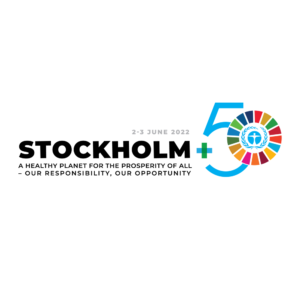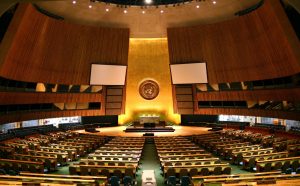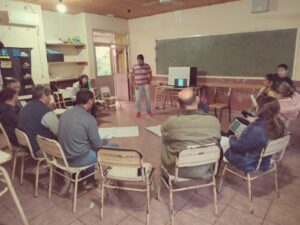One Planet: forests at risk
In 2019 every 6 seconds, Planet Earth lost an area of virgin forest equivalent to a football stadium. In just 1 minute, ten stadiums.
In 2019 every 6 seconds, Planet Earth lost an area of virgin forest equivalent to a football stadium. In just 1 minute, ten stadiums.
In Latin America, deforestation is advancing without hesitation, thus becoming one of the three regions in the world with the greatest loss of native forests. The 46.4% (935.5 million hectares) of this regional surface is made up of forests.
In the last three decades (1990-2019), 96.9 million hectares of Latin American forest area were lost, according to the latest report “The State of the Forests” carried out by the Food and Agriculture Organization of the United Nations (FAO).
In Argentina, the situation does not escape this alarming trend. From 1998 to the present, according to a recent study by the National Ministry of the Environment and Sustainable Development, 6.5 million hectares of native forests disappeared.
The quarantine imposed by the covid-19 pandemic did not manage to pause this practice: almost 50,000 hectares in northern Argentina (an area similar to twice the size of CABA) were deforested. Of the aforementioned area, 87% is in the Chaco area, the second source of South American deforestation after the Amazon, says the Ministry.
Paradoxically, 43% of the forests became extinct during the validity of Law 26,331, popularly known as the Law of Forests, passed in 2007. The aforementioned law established three areas defined with different conservation criteria identified with different colours. Red refers to primary forests of high conservation value, which should not be altered. Yellow refers to forests of medium conservation value, which must be used sustainably in tourist activities and scientific research. Finally, green identifies forests of low conservation value, thus allowing their partial or total transformation.

The report in question determines that one of the causes that encouraged the clearing was the reduction in withholdings on grain exports, mainly soybeans, which led to the expansion of the borders of these crops to the detriment of the native forest surface. The area in which this was most evident was the Chaco region, made up of the provinces of Santiago del Estero (28%), Salta (21%), Chaco (14%) and Formosa (13%). Another consequence of this situation was the displacement of the local communities that resided there.
The data speak for themselves until 2015 the deforestation rate fell but after that year it grew again. Between 2008 and 2018, 47% (845,832 hectares) of deforestation was identified with authorized clearings within the green category.
The largest proportion of the lost areas (52.8%) are identified in red and yellow categories, that is, the areas that the law prohibits modifying. In addition to this, 983,467 hectares of no incorporated forests to the provincial body of laws were also lost.
The data provided coincide with those released by Greenpeace in its latest Annual Report on deforestation in northern Argentina. The environmental organization revealed that in 2019 80,938 hectares of forests were lost in four of the provinces that account for 80% of the clearings in Argentina. Detailed figures indicate 25,513 hectares in Santiago del Estero, 23,521 in Formosa, 14,664 in Salta and 17,240 in Chaco.

Causes and consequences of deforestation
Forests are a reservoir of pure air, free of carbon, therefore, they are essential for animal and human survival. Most of Argentina’s greenhouse gas (GHG) emissions (39%) are generated by activities such as agriculture, livestock, and forestry.
Agriculture and intensive livestock are the main causes of deforestation. To a lesser extent, subsistence agriculture also contributes to forest degradation. Other causes of these practices are fires, overgrazing, infrastructure development and overexploitation of forest resources.
The loss of natural hectares reduces the capacity to mitigate climate change, causes hydrological alterations with reductions in the productive capacity of the soils and increases the risk of floods.
The provision of ecosystem services to society such as the pollination of crops and native flora, the dispersal of fruits and seeds, the natural regeneration of forests (including woody trees), the biological control of pests, the hydrological resilience of natural ecosystems and the genetic diversity of native species (plants and animals) is diminished by deforestation.
This practice – deforestation – also affects the formation and availability of resources, the provision of consumer goods (firewood and wood) and food for the communities.
In this sense, for the National Ministry of Environment and Sustainable Development, monitoring, prevention, curbing illegal clearing and intelligent management of native forests represent priority actions. So is the review of existing policies to be more effective in fulfilling these tasks.
Consequently, in recent months the Deforestation Early Warning System (SAT) has been strengthened and the precision and periodicity of the information generated have been improved. Likewise, agreements were reached with the provinces to apply funds withheld in previous years for 660,000,000 Argentine pesos, in addition to the 570,000,000 Argentine pesos already available for 2020.
More deforestation means fewer trees and more floods, which translates into the advance of climate change and the consequent eviction of native communities plus the disappearance of endangered species.

#News #Ecology #Forests #Nature








